New Delhi, India 18 Reviews
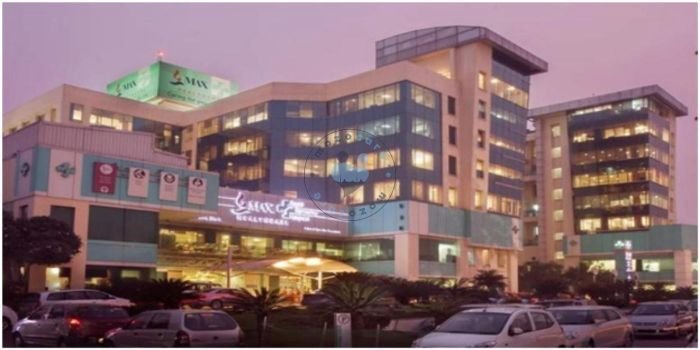
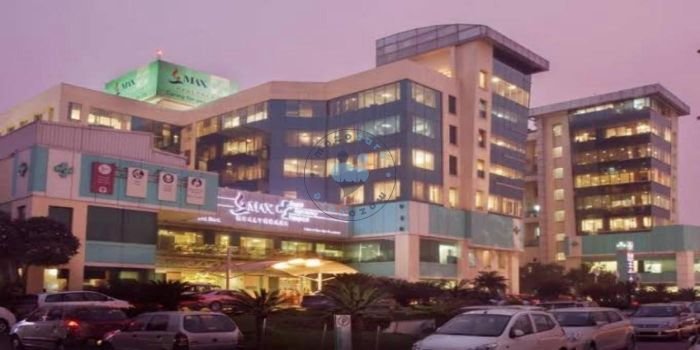
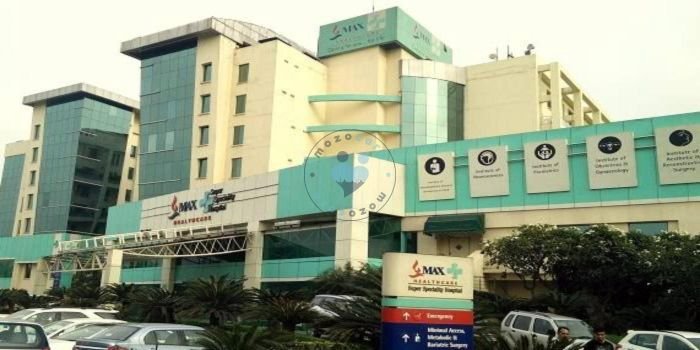
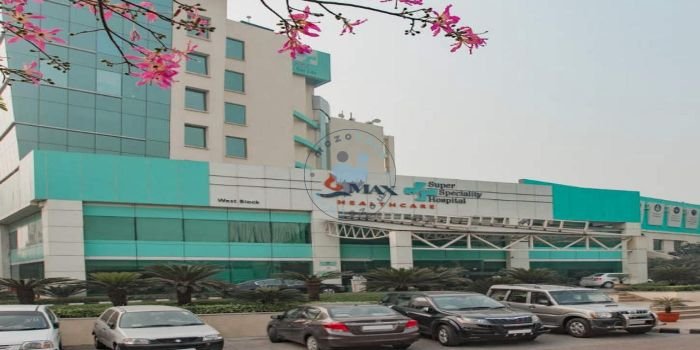
190 procedures across 17 specialities
Allergy testing, also known as skin, prick, or blood testing is performed by a trained allergy specialist to determine if your body has an allergic reaction to a known substance. The exam can be in the form of a blood test, a skin test, or an elimination diet. Allergies occur when your immune system, which is your body’s natural defense, overreacts to something in your environment. Allergy testing can determine which particular pollens, molds, or other substances you’re aller
Learn more about Allergy TestingBariatric Surgery Consultation abroad
Learn more about Bariatric Surgery ConsultationGastric Plication treatments abroad
Learn more about Gastric PlicationBiliopancreatic Diversion with Duodenal Switch (BPD/DS) treatments abroad,
Learn more about Biliopancreatic Diversion with Duodenal Switch (BPD/DS)12 View all 9 procedures 12 View less Procedures
Coronary Artery Bypass Graft (CABG) Surgery treatments abroad Coronary artery disease (CAD) is one of the most common heart disease conditions and happens when cholesterol and other materials build up in the artery walls, narrowing the artery and reducing the blood supply to the heart. This leads to chest pain and in the worse cases to a stroke, which can damage the patient life quality or have even more serious consequences. One way to treat this condition is to provide the blood a new way
Learn more about Coronary Artery Bypass Graft (CABG) SurgeryHeart Valve replacement is a medical procedure to substitute one or more of the heart valves damaged, or affected by a disease. The process is done as an alternative to valve repair. In conditions when valve repair or catheter-based procedures become nonviable, the cardiologist may propose undergoing the valve replacement surgery. During the procedure, your cardio-surgeon detaches the heart valve and restores it with a mechanical one or one made from cow, pig or human heart tissue (biological ti
Learn more about Heart Valve ReplacementCardiology Consultation treatments abroad Cardiology, also known as cardiovascular medicine and a subspecialty of internal medicine, is a medical field that focuses primarily on the diagnosis and treatment of various diseases and disorders that affect the heart. Doctors that specialize in this particular field are known as cardiologists. For patients with heart problems, the initial cardiology consultation and subsequent consultations are essential parts of a medical treatment process. Not
Learn more about Cardiology Consultation12 View all 20 procedures 12 View less Procedures
Tympanoplasty treatments abroad,
Learn more about TympanoplastyOssicular Chain Reconstruction treatments abroad,
Learn more about Ossicular Chain ReconstructionLaryngeal Surgery treatments abroad,
Learn more about Laryngeal Surgery12 View all 4 procedures 12 View less Procedures
Find Cholecystectomy abroad
Learn more about CholecystectomyFind Colonoscopy abroad A colonoscopy is the examination of the colon (large intestine and bowel) with a video camera which is attached to a flexible tube with a light at the tip, and is passed through the anus. A colonoscopy helps to locate ulcers, tumors, polyps, and areas of inflammation. It also allows for tissue samples (biopsies) to be collected which can then be later tested as well as the opportunity to remove any abnormal growths. Colonoscopies are also used to screen for precancero
Learn more about ColonoscopyFind Endoscopy abroad An endoscopy is a non-surgical procedure which is carried out to examine the digestive tract. An endoscope is a medical instrument with a flexible tube that is fitted with a light and a camera at the top. This device allows the doctor to view the digestive tract on a monitor. An upper GI tract endoscopy is inserted through the mouth. Other types of endoscopy procedures include a colonoscopy and sigmoidoscopy whereby the camera is inserted in the anus. An endoscopy
Learn more about Endoscopy12 View all 7 procedures 12 View less Procedures
Find Hernia Repair abroad with mozocare A hernia is the bulging of internal organs or tissues which protrudes through the wall of the organ. It is a lump that forms and it may cause pain and swelling. It normally occurs in a weakened or thinned area of the abdomen. There are various types of hernias which include inguinal or groin hernia, femoral hernia, umbilical hernia, incisional hernia, epigastric hernia, and spigelian hernia. One of the main causes of a hernia is weakness in the
Learn more about Hernia RepairFind Umbilical Hernia Repair abroad with Mozocare,
Learn more about Umbilical Hernia RepairFind Hiatal Hernia Surgery abroad with Mozocare,
Learn more about Hiatal Hernia SurgeryFind Ovarian Cyst Removal abroad with Mozocare Ovarian cyst removal is a surgical operation where fluid-filled sacs grow up on the surface of the ovary. An Ovarian cyst is non-cancerous and harmless, most females have suffered ovarian cyst and have overcome on their own without any medication. When the ovarian cyst grows abnormally then it has to be removed, if not there will be pelvic pain, abdomen fullness, and bloating can happen. If a severe ovarian cyst is not treated at its earliest the
Learn more about Ovarian Cyst RemovalFind Vaginoplasty abroad with Mozocare Vaginoplasty is a surgical operation in which rejuvenation and reframing of the vagina are done. Here, loosen, slack vagina, and separation of muscles gets treated. Vaginoplasty is also recognized as posterior colporrhaphy. Vaginoplasty is complex and can be infectious but is very rare. After the surgical operation, several risks are linked such as vaginal infection, itching, and bleeding. But vaginoplasty is worth every penny as the end result provides
Learn more about VaginoplastyGynecologic Laparoscopy abroad Gynecologic laparoscopy is an alternative to open surgery. It uses a laparoscope to look inside your pelvic area. Open surgery often requires a large incision. With miniaturized instruments, your doctor can perform a variety of surgeries. These include: ovarian cyst removal tubal ligation, which is surgical contraception hysterectomy. Which other gynecology procedures can I find abroad? At Mozocare, you can find Hysterectomy Abroad, My
Learn more about Gynecologic Laparoscopy12 View all 6 procedures 12 View less Procedures
Kidney Transplant (Living Related Donor) treatments abroad, A kidney transplant is a surgical procedure to place a healthy kidney from a living or deceased donor into a person whose kidneys no longer function properly. The kidneys are two bean-shaped organs located on each side of the spine just below the rib cage. Each is about the size of a fist. Their main function is to filter and remove waste, minerals, and fluid from the blood by producing urine. When your kidneys lose this filter
Learn more about Kidney TransplantEpilepsy Treatment treatments abroad Epilepsy treatment refers to a clinical treatment where the tiny part of the brain which creates seizures, is eliminated using a little electrical device that is put in the body. A variety of reasons may lead to seizures for which Anti-epileptic drugs (AEDs) are given to control seizures. This disease may occur in childhood or after age 60 The symptoms of this disease differ from person to person. An electroencephalogram (EEG) helps to diagnose epilepsy.
Learn more about Epilepsy TreatmentNeurology Consultation treatments abroad Neurology consultation is the main activity of neurology teams and it includes diagnosis and follow-up of all neurological diseases and then deciding appropriate diagnostic and therapeutic approaches for each case. At Mozocare, we have highly qualified and experienced neurologists. What are the general objectives of neurology consultation? To diagnose any neurological disease. To establish a complementary investigation plan to determine the
Learn more about Neurology ConsultationTrigeminal Neuralgia Treatment treatments abroad Trigeminal Neuralgia is an immediate, unpredictable sharp facial pain felt like an electric shock in the jaw, teeth, or gums for about two minutes. In almost all cases, pain is just only in the lower part of one side of the face. This extreme pain can further lead to issues like weight loss, isolation, and sometimes depression as well. The main cause is squeezing of the trigeminal nerve that gives sensations of pain and touches from your teeth,
Learn more about Trigeminal Neuralgia Treatment12 View all 4 procedures 12 View less Procedures
Brain Aneurysm Repair Abroad It is a surgery to treat a weak area in the blood vessel wall which leads to a bulge or burst of the vessel which can cause bleeding into the cerebrospinal fluid (CSF) and brain that forms a collection of blood. Symptoms being behavior change, speech problems, numbness, vision problems, loss of coordination, muscle weakness, etc. Diagnostic tests are Cerebrospinal fluid test, CT, MRI, Cerebral angiogram, and X-ray. Treatment for the disease can be aneurysm clippin
Learn more about Brain Aneurysm RepairBrachial Plexus Injury Treatment treatments abroad Brachial plexus refers to the system of nerves that transmits signals from your spinal cord to your shoulder, arm, and hand. Brachial plexus injury occurs when nerves are compressed, stretched, or torn away. Causes are sports, difficult births, motor-vehicle accidents, tumors, and cancer treatments. Symptoms being a burning sensation in the arm; numbness or weakness in arm; lack of movement and feeling in the hand, arm, or shoulder; and sever
Learn more about Brachial Plexus Injury TreatmentHydrocephalus Treatment Abroad Hydrocephalus is a condition where excess cerebrospinal fluid (CSF) builds up within the fluid-containing cavities or ventricles of the brain. This maximizes the size of ventricles and puts pressure on the brain. It is found in infants or adults above 60 age. Symptoms are headache, enlargement of the head, impaired vision, memory loss, poor coordination or balance, etc. Diagnostic tests are ultrasound, MRI, CT scan, and neurological exam. Treatment for the
Learn more about Hydrocephalus Treatment12 View all 9 procedures 12 View less Procedures
Whipple Procedure treatments abroad,
Learn more about Whipple ProcedureChronic Leukemia Treatment treatments abroad Leukemia can be defined as a malignant disease of the blood and bone marrow and is associated with abnormalities in the development and functioning of blood cells. Some leukemia types affect children more often while other are only found in adults. Leukemia can be divided into two subcategories according to the blood cell type: chronic and acute leukemia. Chronic leukemia can be myelogenous or lymphocytic. The main difference between acute and chro
Learn more about Chronic Leukemia TreatmentAcute Leukemia Treatment treatments abroad Leukemia consists of a malignant disease of the blood and bone marrow and is associated with abnormalities in the development and functioning of blood cells. There are several types of leukemia. Some of them affect children more often, while others only affect adults and can be acute or chronic depending on the type of blood cell that is affected by the disease. There are two main types of acute leukemia acute lymphoblastic leukemia (ALL), and acute
Learn more about Acute Leukemia Treatment12 View all 27 procedures 12 View less Procedures
Vitrectomy abroad Vitrectomy surgery focuses on the middle of the eye in order to remove the vitreous gel from the eye. This may be achieved in the event of a retinal detachment. It also involves the removal of vitreous gel which enables the eye doctor, or ophthalmologist, much better access to the back of the eye. The vitreous gel can also be removed if blood in the result of a vitreous hemorrhage occurs due to the vitreous gel not clearing on its own. \The procedure involves the surgeon
Learn more about VitrectomyOphthalmology Consultation abroad Ophthalmology is the study of medical conditions and surgery which deals with the diagnosis and treatment of eye disorders. For patients with eye disorders, the early ophthalmologist consultation and consecutive consultations are crucial parts of the treatment process. Consultation plays a vital role not only in diagnosis and treatment, but they are also essential in instructing the patient on lifestyle changes required to prevent the estate from worse
Learn more about Ophthalmology ConsultationCataract Surgery Abroad A cataract occurs when the lens of the eye becomes cloudy, causing vision to get worse with the time. Cataract can start to appear at 50 or 60 years but should not cause vision problems until 70 or 80 years old. As a consequence, if is not treated it can lead to blindness, and surgical treatment is among the most involved solutions. The surgery involves the removal of the natural lens of the eye, also known as a "crystalline lens", which is where the cataract
Learn more about Cataract Surgery12 View all 8 procedures 12 View less Procedures
Hip Arthroscopy abroad A hip arthroscopy is a minimally invasive procedure that allows doctors too see hip joint in the absence of making a slit through skin and tissues. it is used to determine and treat a wide range of problems related to hip. This procedure does not require large incisions. An arthroscope (a small camera) is inserted into the hip joint and with the help of the images received on the monitor, the surgeon guide the miniature surgical instrument. This helps in diagnosing the
Learn more about Hip ArthroscopyHip Replacement abroad Hip Replacement abroad, A hip replacement involves replacing the natural hip joint that is not functional anymore and causes pain, with a prosthetic implant. Total hip joint replacement means that the end of the femur (thigh bone), cartilage, and hip socket are replaced to create new joint surfaces. Hip replacements are carried out to improve quality of life, relieving chronic pain caused by hip conditions, and improving hip mobility. Hip replacements are usually used
Learn more about Hip ReplacementKnee Arthroscopy abroad Knee Arthroscopy abroad In the strictest sense, knee arthroscopy involves the insertion of a camera (called arthroscopic camera) into a small incision in the knee so that the surgeon can examine different parts of the knee from the inside and repair or diagnose different conditions. The surgeon may insert other tools through other openings to repair or remove things from within the knee. Arthroscopic surgery may be an option for patients with several different conditi
Learn more about Knee Arthroscopy12 View all 31 procedures 12 View less Procedures
In Vitro Fertilization (IVF) treatments abroad In vitro fertilization (IVF) refers to a variety of fertility treatments whereby an egg is fertilized by sperm outside of the body, or in other words, "in vitro". The zygote (fertilized egg) is then cultured in a laboratory for around 2 - 6 days, before being moved to the prospective mother's uterus with the aim of initiating pregnancy. IVF is most commonly used to aid pregnancy when natural conception is no longer possible There ar
Learn more about In Vitro Fertilization (IVF)Assisted Hatching abroad,
Learn more about Assisted HatchingLaminectomy abroad,
Learn more about LaminectomySpinal Fusion Surgery abroad,
Learn more about Spinal Disc Herniation TreatmentSpinal fusion surgery is the most common and most recommended treatment option given by orthopedic or neurosurgeons to treat back issues or spine problems/deformities. However, all the patients with spine issues are not treated with spinal fusion surgery. Based on the factors like history, symptoms, type of pain, duration of pain, if it is radiating to other parts of the body, overall health of the patient this surgery is planned to prevent pain and easing out daily activities. Spinal f
Learn more about Spinal Fusion Surgery12 View all 24 procedures 12 View less Procedures
Vasectomy abroad When men desire not to have children they can decide to have a vasectomy. Vasectomy is a surgical procedure performed to sterilize the male reproductive system and it is carried out by sealing the tubes (vasa deferentia tubes) that carry the semen in the urethra. This doesnâ??t mean that men will not be able to ejaculate after the surgery, only that the semen will not carry sperm anymore. The semen will still be produced in the body but will be reabsorbed from it and ca
Learn more about VasectomyTransurethral Resection of the Prostate (TURP) abroad The prostate gland is positioned between the bladder and the penis, with the urethra (the thin tube that carries urine from the bladder outside the body) running directly through it. The prostate is hence vital in maintaining a healthy urinary system. A swollen or enlarged prostate could be a sign of benign prostatic hyperplasia. The symptoms of this disease include pain and difficulty while urinating, a feeling of discomfort and heavines
Learn more about Transurethral Resection of the Prostate (TURP)Urology Consultation abroad,
Learn more about Urology Consultation12 View all 22 procedures 12 View less Procedures
Angiography abroad,
Learn more about AngiographyCarotid Endarterectomy abroad,
Learn more about Carotid EndarterectomyVascular Medicine Consultation abroad,
Learn more about Vascular Medicine Consultation12 View all 12 procedures 12 View less Procedures
| # | DOCTOR | SPECIALITY | |
|---|---|---|---|
| 1 | Dr. Ramneek Mahajan | Orthopedecian & Joint Replacement Surgeon | |
| 2 | Dr. Sujeet Jha | Endocrinologist | |
| 3 | Dr Rajiv Agarwal | Interventional Cardiologist | |
| 4 | Dr. Sandeep Budhiraja | ||
| 5 | Dr. Pradeep Chowbey | ||
| 6 | Prof (Dr.) Subhash Gupta | ||
| 7 | Dr. Balbir Singh | ||
| 8 | Dr. S.K.S. Marya | ||
| 9 | Dr. Ambrish Mithal | ||
| 10 | Dr. Dinesh Khullar | Nephrologist |

International Standards Organization (ISO 9000)

Joint Commission International (JCI)

National Accreditation Board for Hospitals & Healthcare (NABH)
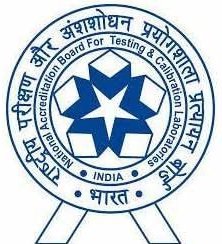
National Accreditation Board for Testing and Calibration Laboratories (NABL)
No. 1, 2, Press Enclave Road, Mandir Marg, Saket Institutional Area, Saket
| # | Hospital | Country | City |
|---|---|---|---|
| 1 | Primus Super Specialty Hospital | India | New Delhi |
| 2 | Advance Fertility and Gynaecology Centre | India | New Delhi |
| 3 | Indian Spinal Injuries Center | India | New Delhi |
| 4 | Max Super Specialty Hospital Patparganj | India | New Delhi |
| 5 | Medeor Hospital, Qutab | India | New Delhi |
Search Procedure and Hospital
Choose your Options
Book your program
You are ready for a new and healthier life
Mozocare is a medical access platform for hospitals and clinics to assist patients access best medical care at affordable prices. Mozocare Insights provides Health News, Latest treatment innovation, Hospital ranking , Healthcare Industry Information and Knowledge sharing .
The information on this page was reviewed and approved by Mozocare team. This page was updated on 18 May, 2021.